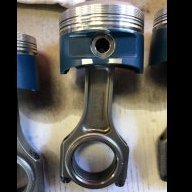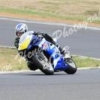Rb26 Internals Into Rb25 Looking For Info.
Announcements
-
Similar Content
-
Latest Posts
-
Don't use "gasless MIG" (FCAW) you want to use proper MIG. FCAW burns a few hundred degrees hotter than MIG will for mild steel. It is a true ball ache for sheet metal. New MIG / TIG machines even have features like "Spot Weld" as well as "Automatic" settings. Plenty of people say for DIY home hobby, the auto machines are pretty good for 95% of welding. I personally, I'm a sucker for punishment and wanting to dial it in, and be able to adjust the machine. Mainly because I used to MIG weld for a living, and being able to tweak and tune things ever so slightly was my preference. Hence when I bought my ACDC TIG, it has all the adjustments for everything and no "easy" mode. Ha ha I have stick, MIG, "gaslessMIG" and ACDC TIG at home. Out of them, if you're doing mild steel sheet metal repair, and want to do mild steel exhausts, go MIG. If you're thinking you'll want to get into doing some aluminium stuff, or stainless steel, get an ACDC TIG with HF start. If you can, get one with a foot pedal too. My MIG machine is a UniMIG, and my Stick/TIG is CigWeld. If I were buying another machine, I'd buy another CIGWeld. Lots of people having issues with UniMIG, and them not wanting to cover warranty. Everything has to go back to UNIMig themselves. CIGWeld, I've had to use their warranty on my machine for a gas leak, they have repair centres everywhere, (contracted authorised repair centres). First repair place I used were hopeless, but the second place were amazing. Warranty process itself super easy, and second repair place was telling me CigWeld actually cover in their warranty, upto an hour of techs time to help you with your machine, and going through the settings and helping teach you the machine. UniMIG keep trying to get out of replacing motherboards on 12 month old machines. TLDR, mild steel sheet welding, buy a MIG. my vote is CigWeld for brand.
-
I guess that's what happens when someone can't convert metric to freedom units to machine something. 😛
-
I've watched some vids and the technique seems to be to butt the sheets up to one another and use MIG to spot weld and slowly fill in the spots until its eventually all sealed. No runs as you would normally do, as there's too much heat generated that way. Yeah my stick welds are terrible these days because its been so long since i've done any of it. I expect to be spending many hours practicing
-
By joshuaho96 · Posted
I have personally seen a Tomei USA RB26 cam that didn't even fit the head. Kind of nuts to me that it was even possible for that to happen but such is life. There's two UP Garages in the US. One is a US branch of the Japanese company which sells things they brought over at tremendous markup. The other is University Place Garage/Fairlady Motors which is a shop best known for putting VCAM in RBs and trying to convince people to stop putting in 800hp of turbo on a 2.5L motor. -
Gasless MIG is not exactly suited to what I would call "delicate" or "attractive" welding. So I would rule it out for sheet metal rust repair type stuff, unless you're only doing it in hidden places. I'm thinking about getting myself a gasless MIG for "hack together" type work. Noting that my welding experience is very very low, and quite a long time ago. So I'm also looking for "simple", but I'm not expecting "excellent". I'm not even sure that proper MIG is the best for sheet metal work. I get the feeling that the degree of control and the minimisation of heat input that you get from TIG is probably what you really want. And then you have to get good at doing it before the welds won't look like a monkey flinging a handful of shit anyway. You're probably SOL for an easy and cheap way to get from where you are to where you want to be. Much like myself.
-









Recommended Posts
Create an account or sign in to comment
You need to be a member in order to leave a comment
Create an account
Sign up for a new account in our community. It's easy!
Register a new accountSign in
Already have an account? Sign in here.
Sign In Now